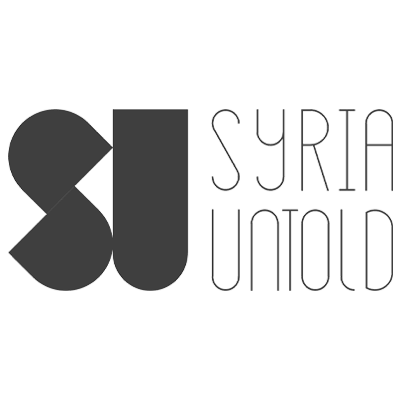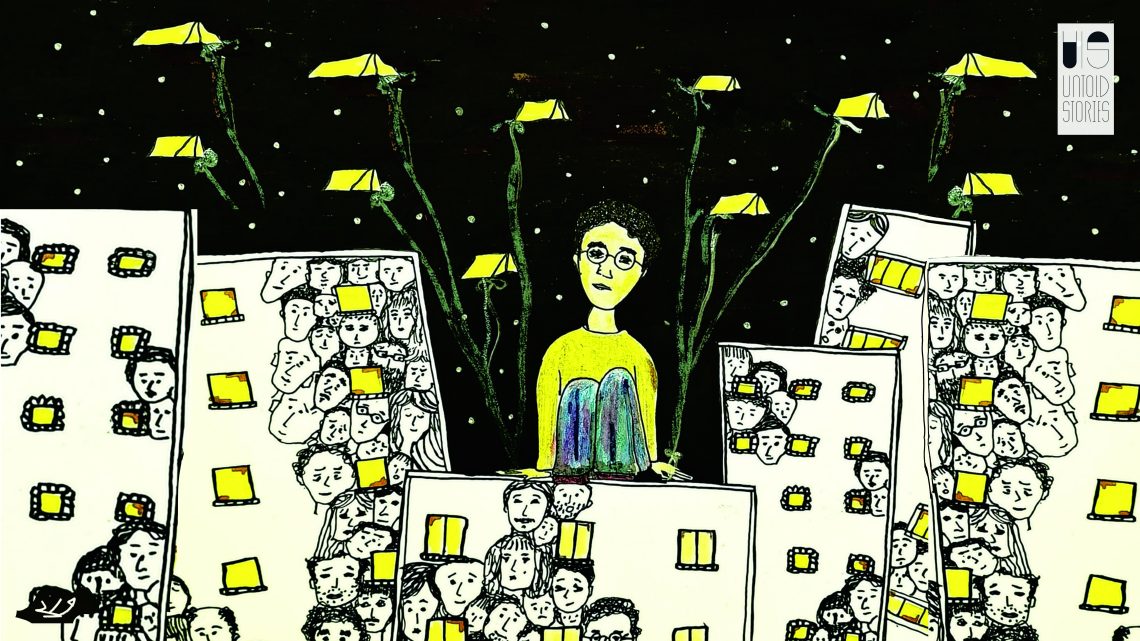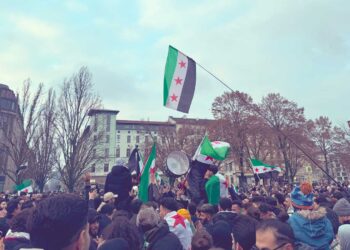In the hours following the attack of Palestinian fighters in the south of Israel, Western observers, bewildered, speculated about why Hamas and the young Palestinians of Gaza, born and bred under siege and bombs, have launched an attack of this magnitude, and right now. Others expressed their surprise at the surprise.
The Israeli government responded by declaring “total war”, promising the pulverization of Gaza and demanding the inhabitants to leave the strip, knowing that there is no escape. Mobilising even the Holocaust and comparing the fighters to the Nazis, the Israeli government engaged in an operation that they claim is aimed at the destruction of Hamas.
In fact, as I am writing, Gaza is being razed to the ground with an unbearable number of Palestinian deaths which gets larger by the hour, with people fleeing under Israeli bombs, water, electricity and fuel being cut, hospitals – receiving one patient a minute – on the brink of catastrophe, and humanitarian convoys prevented from entering the strip.
An ethnic cleansing of Palestinians in Gaza is taking place with many legal observers claiming this level of violence amounts to a genocide.
But what has happened – shocking and terrible in terms of the number of victims – including children and the elderly – creates not only a new political scenario, but above all it also imposes a new frame of meaning.
Especially since the Oslo accords onwards, the emotional and interpretative filter applying to the “conflict” has been the asymmetrical valuing of one life over the other which in turn rested on an expectation of acquiescence and acceptance of the Palestinians’ subalternity as a colonised people. This framing has been shattered.
The day of the attack, millions of Palestinians inside and outside the occupied territories found themselves in a trance-like state – with an undeniable initial euphoria from seeing the prison wall of Gaza being dismantled for the first time. They were wondering whether what they had before their eyes was delirium or reality. How was it possible that the Palestinians from Gaza, confined in a few suffocating square kilometres, repeatedly reduced to rubble, managed to evade the most powerful and technologically sophisticated army in the world, using only rudimentary equipment – bicycles with wings and hang-gliders? They could scarcely believe they were witnessing a reversal of the experience of violence, accustomed as they are to Palestinian casualties piling up relentlessly under Israeli bombardments, machine gun fire and control apparatus.
Indeed, that Israel “declared war” after the attack illustrates this: to declare war assumes that before there was “peace”. To be sure, the inhabitants of Sderot and southern Israel would like to continue to live in peace. For the inhabitants of Gaza, on the other hand, peace is an abstract concept, something they have never experienced. For the inhabitants of the strip, as well as under international law, Gaza is an occupied territory whose population – two million and three hundred thousand people, of which two thirds are refugees from 1948 – lives (or to use their own words: “die slowly”) inside a prison. Control over the entry and exit of people, food, medicine, materials, electricity and telecommunications, sea, land and air borders, is in Israeli hands. International law, correctly invoked to defend the Ukrainian people and to sanction the Russian occupier, is a wastepaper for Israel, which enjoys an impunity granted to no other state that operates in such violation of UN resolutions, even disregarding agreements they themselves signed, never mind international norms and conventions.
This scaffolding has crucially rested on the certainty that Palestinians cannot and should not react to their condition, not only and not so much because of their obvious military inferiority, but in the warped belief that Palestinian subjectivity must and can accept remaining colonised and occupied, to all intents and purposes, indefinitely. The asymmetry of strength on the ground led to an unspoken – but devastatingly consequential – presumption that Palestinians would accept to be confined to a space of inferiority in the hierarchy of human life.
In this sense, what is happening these days cannot be understood and analysed with the tools of those who live in “peace”, but must be understood (insofar as this is even possible for those who do not live in Gaza or the occupied Palestinian territories) from a space defined by the effects of colonial violence and trauma. It is to Franz Fanon that we owe much of what we know about colonial violence – especially that it acts as both a physical and psychic injury. A psychiatrist from Martinique who joined the liberation struggle for independence in Algeria under French colonial rule, he wrote at length about how the immensity and duration of the destruction inflicted upon colonised subjects results in a wide and deep process of de-humanisation which, at such a profound level, also compromises the ability of the colonised to feel whole and to fully be themselves, humans among humans. In this state of physical and psychic injury, resistance is the colonised subject’s only possibility of repair. This has been the case historically in all contexts of liberation from colonial rule, a lineage to which the Palestinian struggle belongs.
It is in this light that the long-lasting Palestinian resistance of the last 75 years should be seen, and this is also the key to understanding the unprecedented events of the last few days. These are the result, as many observers – including Israeli ones – have noted, of the failure of the many forms of peaceful resistance that the Palestinians have managed to pursue, despite the occupation, and which they continue to put into play: the hunger strikes of prisoners under “administrative detention”; the civil resistance of villagers such as Bil’in or Sheikh Jarrah who are squeezed between the separation wall, the expropriation of land and homes, and suffocated by the increasingly aggressive and unstoppable expansion of settlements; the efforts to protect the natural environment and indigenous Palestinian culture, including the centuries-old olive trees so often burnt and vandalised by settlers; the Palestinian civil society organisations that map and report human rights violations – which make them, for Israel, terrorist organisations; the struggle for cultural and political memory; the endurance of refugees in refugee camps awaiting implementation of their human rights supported by UN resolutions, as well as reparation and recognition of their long term suffering; and, further back in time, the stones hurled in resistance during the first Intifada, when young people with slingshots threw those same stones with which Israeli soldiers broke their bones and lives, back to them.
Recall that, in Gaza, those who are not yet twenty years old, who make up about half the population, have already survived at least four bombing campaigns, in 2008-9, in 2012, in 2014, and again in 2022. These alone caused more than 4000 deaths.
And it is again in Gaza that the Israeli tactic has been perfected of firing on protesters during peaceful protests, such as those in 2018, to maim the bodies – a cynical necropolitical calculation of random distribution between maimed and dead. It is not surprising, then, that in post-colonial literature – from Kateb Yacine to Yamina Mechakra, just to give two examples – the traumas of colonial violence are narrated as presence and absence, in protagonists’ dreams and nightmares, of amputated bodies. This is a metaphor for a simultaneously psychic and physical maiming of the colonised identity, that continues over time, from generation to generation.
Despite their predicament as colonised for decades and their protracted collective trauma, Palestinians inside and outside of Palestine have however shown an incredible capacity for love, grief and solidarity over time and space, of which we have infinite examples in day-to-day practices of care and connectedness, in the literature, in the arts and culture, and through their international presence in other oppressed peoples’ struggles, such as Black Lives Matter and Native American Dakota protestors camps, or again in places such as the Moria camp in Greece.
The brutality of a 16 years long siege in Gaza, and the decades of occupation, imprisonment, humiliation, everyday violence, death, grief – which as we write happen at an unprecedented genocidal intensity, but are in no way a new occurrence – have not however robbed people of Gaza, as individuals, of their ability to share in the grief and fear of others.
“Striving to stay human” is what Palestinians have been doing and continue to do even as they are forced to make inhumane choices such as deciding who to rescue from under the rubbles based on who has more possibility to survive, as recounted by journalist Ahmed Dremly from Gaza during his brief and precious dispatches from the strip under the heavy shelling. This colonial violence will continue to produce traumatic effects in the generations of survivors. Yet, it has to be made clear that as the occupied people, Palestinians cannot be expected to bear the pain of the occupier. Equal standing and rights in life are the necessary preconditions for collective shared grief of death.
Mahmoud Darwish wrote, in one of his essays on the “madness” of being Palestinian, written after the massacre of Sabra and Shatila in 1982, that the Palestinian “…is encumbered by the relentless march of death and is busy defending what remains of his flesh and his dream…his back is against the wall, but his eyes remain fixed on his country. He can no longer scream. He can no longer understand the reason behind Arab silence and Western apathy. He can do only one thing, to become even more Palestinian… because he has no other choice”.
The only antidote to the spiral of violence is an end to the occupation and siege, and for Israel to fully comply with international law and to the UN resolutions, as a first and non-negotiable step. From there we can begin to imagine a future of peace and humanity for both Palestinians and Israelis.








